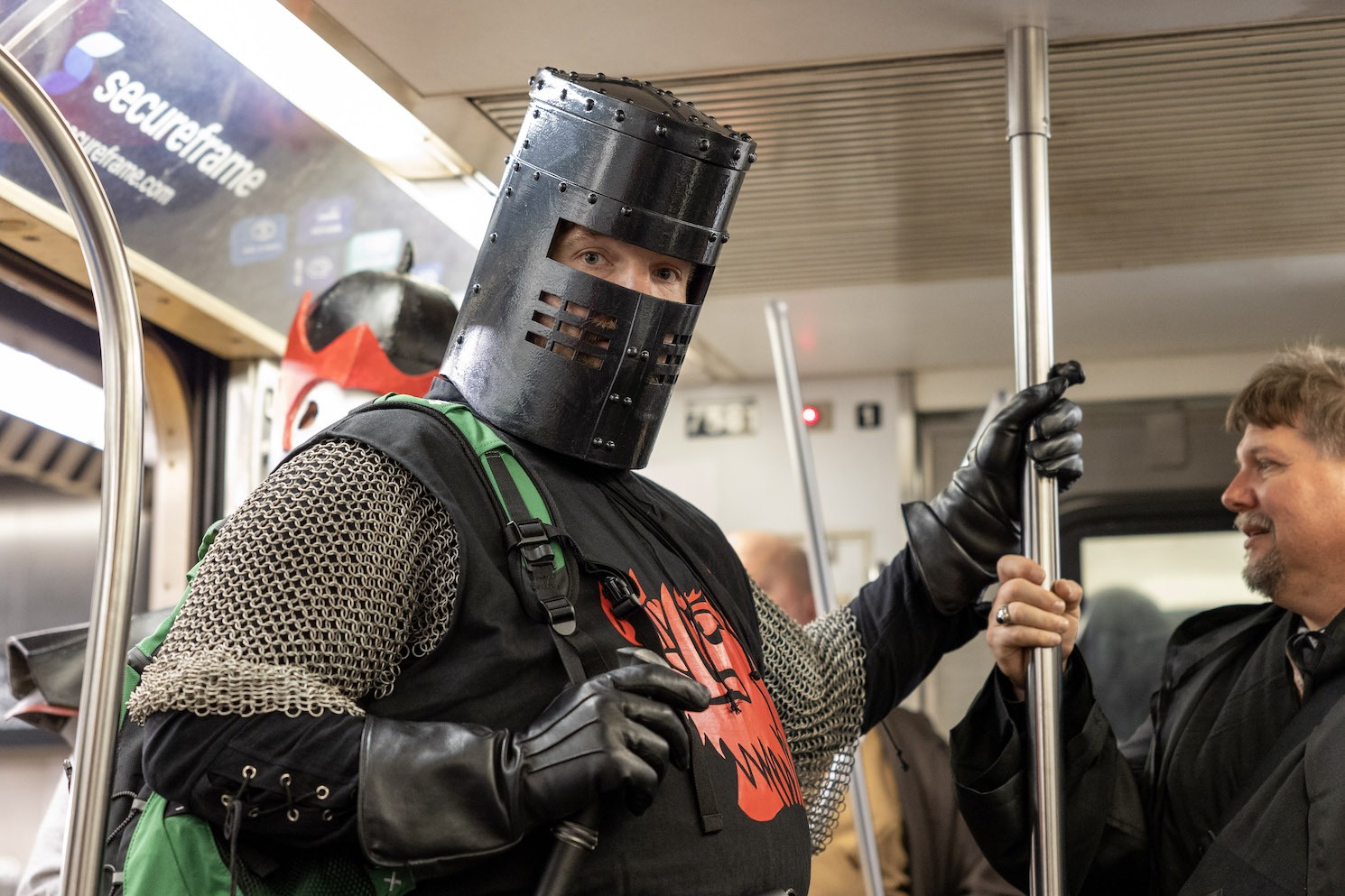As New York City returns to normalcy following the COVID-19 pandemic, its yearly Comic Con followed suit. After two years of low attendance, visitors came in droves to the Javits Center in Hell’s Kitchen from Oct. 6 to Oct. 9, ready to fully engorge themselves in fandom culture.
New York Comic Con and the art of cosplay
A photographer’s experience seeing characters come to life through fandom.
October 17, 2022

NYCC is a melting pot of panels with celebrities, exhibitions from retailers, lounges to connect with fellow fans and opportunities to engage with the artists who create fan-favorite stories. However, the biggest spectacles of the event are the cosplayers. Hundreds, if not thousands of the most devoted fans attend the event in full — often homemade — costumes.

Cosplay is an art form; the artists pride themselves not only on their creativity but also accuracy to the minutiae of the character. Cosplayers will often build their costumes out of a variety of raw materials and found objects, taking many hours to build and execute. They devote attention to every detail, even painting themselves with makeup in order to accurately represent the character.
This Mr. Freeze cosplay was created by Mic Valentine.

Not all cosplays are exact replications of existing characters; some fans try to put their own spin on fan-favorite characters. For example, many cosplayers combine an iconic face with the conventions of another property in which the character never has appeared. A common example is to make a character fit an iconic franchise, such as “Star Wars,” or fit a certain historical period such as feudal Japan.


Cosplayers bring varying levels of dedication to their costumes. Whereas one person can spend countless hours building a large mechanical suit with built-in sound effects and moving components, another can construct one out of cardboard and transform in front of an audience.


While the fun of cosplay for some comes from the payoff of many hours spent designing and crafting a costume, others embrace it as a way to spend time with friends and loved ones. Cosplay allows people to collaborate as iconic duos or groups. While certain characters stand on their own as a strong cosplay, having their enemy, love interest, ally or creature companions alongside them provides another dimension of performance.


However, not all parents who come to NYCC play the role of their costumed child’s supervisor. For some families, NYCC is an opportunity to bond by cosplaying together. Adults who love to cosplay use NYCC as a way to introduce their children to the world of fandom, using their children’s preexisting love for costumes to get them involved in convention culture.
The Khonshu cosplay furthest to the left is made by Jenn Barlow.

In the same way that cosplayers put effort into their appearances, they also focus on how to best carry themselves in the halls of the convention. If they are asked for a photograph, for example, some cosplayers will have a certain pose alone and a different pose in frozen action or group scenes.

If you do a good job with your cosplay, you should expect people asking you to take a photo with them. Kids love to pose with their favorite characters, and cosplayers are almost always more than happy to oblige. What attracts many cosplayers to doing so is the sense of community and joy it brings both participants and onlookers. Cosplaying is not just a chance to play the role of your favorite character, but also a way to make someone else happy by letting them play along with you.

As the convention comes to a close each day, New York City’s subways become a juxtaposition of fiction and reality. For the everyday New Yorker, the sight of a man dressed as the black knight from “Monty Python and the Holy Grail” standing next to a soldier of the fire nation from “Avatar: The Last Airbender” is nothing to freak out over. Some subway riders might look up from their phones for a second to see who just boarded the train, but will return just as quickly to what they were doing.
Contact Jason Alpert-Wisnia at [email protected]
Developed for web by Samson Tu
